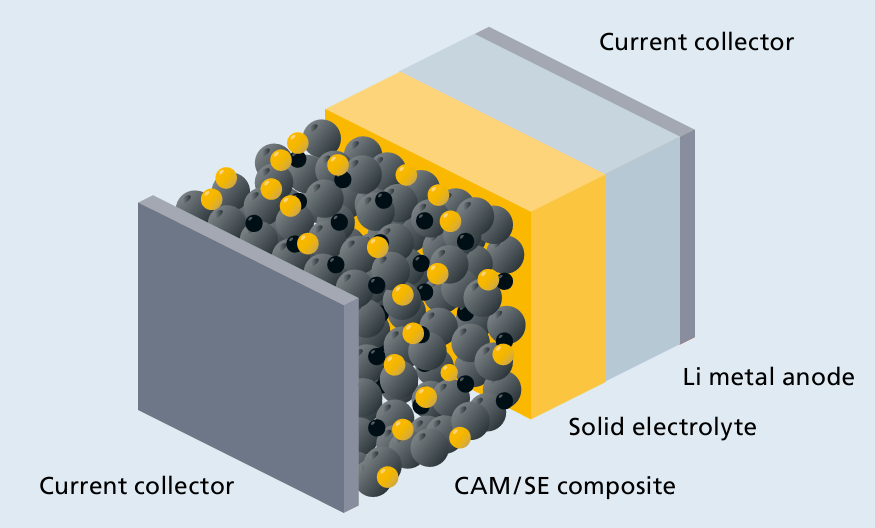‘Big Ag Is Casting a Dark Shadow’ | COP30 People’s March – World Animal Protection

Report on Mobilization at COP30 Highlighting Industrial Agriculture’s Impact on Sustainable Development Goals
Executive Summary
- A significant public demonstration preceding COP30 focused on the detrimental impacts of industrial agriculture on global environmental targets.
- The mobilization, led by organizations including World Animal Protection, advocated for a transition to sustainable food systems, directly addressing several Sustainable Development Goals (SDGs).
- Key themes included the linkage between factory farming and climate change, biodiversity loss, and the need for a just transition that upholds human rights and animal welfare.
Industrial Agriculture’s Conflict with Key SDGs
Impact on Climate Action (SDG 13) and Life on Land (SDG 15)
- The demonstration identified industrial agriculture, particularly factory farming and the global animal feed trade, as a primary driver of climate breakdown, undermining progress on SDG 13 (Climate Action).
- The sector’s role in deforestation and biodiversity loss was highlighted as a direct threat to SDG 15 (Life on Land), which aims to protect terrestrial ecosystems.
- Speakers noted that destroying forests for feed production and intensive animal farming practices are exacerbating environmental degradation.
Implications for Sustainable Food Systems (SDG 2) and Responsible Production (SDG 12)
- The event challenged the assertion that industrial agriculture is a solution to global hunger, arguing that it is an unsustainable model that harms the planet. This directly relates to SDG 2 (Zero Hunger), particularly its target for sustainable food production systems.
- The call to action urged a shift away from current destructive practices toward humane and sustainable food systems, which is a core objective of SDG 12 (Responsible Consumption and Production).
Advocacy for a Just Transition and Inclusive Development
Upholding Climate Justice and Human Rights (SDG 16)
- Advocates emphasized the intersection of climate, biodiversity, human rights, and animal welfare.
- A central demand was for a “just transition” that supports and empowers marginalized groups, a principle aligned with SDG 16 (Peace, Justice and Strong Institutions). The specific communities identified for support include:
- Indigenous Peoples
- Traditional communities
- Quilombola communities
- Small-scale agroecological farmers
The Interlinkage of Health, Environment, and Welfare (SDG 3)
- A key message delivered during the mobilization was the interdependence of animal, human, and environmental health.
- This holistic “One Health” perspective supports the principles of SDG 3 (Good Health and Well-being) by addressing the systemic roots of planetary health crises stemming from unsustainable agricultural practices.
Conclusion
- The public mobilization demonstrated strong support for climate action that integrates animal welfare and social justice.
- The report concludes that achieving a climate-safe future and fulfilling the Sustainable Development Goals requires a fundamental transformation of global food systems, moving away from industrial animal agriculture toward models that protect animals, people, and the planet.
Analysis of Sustainable Development Goals in the Article
1. Which SDGs are addressed or connected to the issues highlighted in the article?
-
SDG 2: Zero Hunger
The article focuses on transforming “food systems” and moving away from “harmful agricultural systems” and “cruel intensive animal farming” towards “humane, sustainable food systems.” This directly addresses the methods of food production, which is a core component of achieving food security and ending hunger sustainably.
-
SDG 10: Reduced Inequalities
The text calls for a “just transition” that specifically “uplifts Indigenous Peoples, traditional communities, quilombola communities and small-scale agroecological farmers.” This highlights the goal of reducing inequalities by supporting marginalized communities disproportionately affected by industrial agriculture.
-
SDG 12: Responsible Consumption and Production
The central theme is a critique of unsustainable production patterns, namely “industrial agriculture” and “factory farming.” The call to shift away from these “destructive practices” towards “humane, sustainable food systems” is a direct appeal for more responsible production methods.
-
SDG 13: Climate Action
The article explicitly links industrial agriculture to “climate breakdown” and “human-caused global warming.” The entire context of the march is related to COP30, a climate conference, and the stated goal is to achieve a “climate-safe future” by addressing the climate impacts of factory farming.
-
SDG 15: Life on Land
The article states that industrial agriculture, particularly the production of feed crops, is a leading driver of “deforestation” (specifically “Amazon deforestation”) and “biodiversity loss.” This directly connects the issue to the protection and restoration of terrestrial ecosystems.
-
SDG 16: Peace, Justice and Strong Institutions
The demand for “climate justice” and the protection of “human rights” in the context of agricultural systems aligns with this goal. It advocates for a just and equitable system that protects the rights of all, especially vulnerable communities.
2. What specific targets under those SDGs can be identified based on the article’s content?
-
Target 2.4: By 2030, ensure sustainable food production systems and implement resilient agricultural practices that increase productivity and production, that help maintain ecosystems, that strengthen capacity for adaptation to climate change, extreme weather, drought, flooding and other disasters and that progressively improve land and soil quality.
The article’s call to transform food systems away from “destructive practices” and towards “humane, sustainable food systems” and “small-scale agroecological farmers” directly supports this target.
-
Target 12.2: By 2030, achieve the sustainable management and efficient use of natural resources.
The critique of industrial agriculture for causing “deforestation” and “environmental degradation” points to the unsustainable use of natural resources like land and forests, making this target highly relevant.
-
Target 13.2: Integrate climate change measures into national policies, strategies and planning.
The march at COP30 is a call for policy-level action. The demand for a “climate-safe future” by addressing the role of agriculture in “climate breakdown” implies the need to integrate these concerns into national and international climate strategies.
-
Target 15.2: By 2020, promote the implementation of sustainable management of all types of forests, halt deforestation, restore degraded forests and substantially increase afforestation and reforestation globally.
The article’s specific mention of industrial agriculture as a “leading force behind Amazon deforestation” directly relates to the goal of halting deforestation.
-
Target 15.5: Take urgent and significant action to reduce the degradation of natural habitats, halt the loss of biodiversity and, by 2020, protect and prevent the extinction of threatened species.
The article identifies “biodiversity loss” as a direct consequence of industrial agriculture, aligning with the objective of this target.
3. Are there any indicators mentioned or implied in the article that can be used to measure progress towards the identified targets?
The article is an advocacy piece and does not mention official quantitative indicators. However, it implies several areas where measurement would be critical to assess progress:
- Rate of Deforestation: The article’s focus on “Amazon deforestation” as a key negative impact implies that a reduction in the rate of deforestation, particularly deforestation linked to agriculture, would be a key indicator of progress towards Target 15.2.
- Biodiversity Levels: By highlighting “biodiversity loss,” the article suggests that indicators measuring the health of ecosystems and the populations of various species in affected areas would be relevant for tracking progress on Target 15.5.
- Greenhouse Gas Emissions from Agriculture: The connection made between “industrial agriculture” and “climate breakdown” implies that measuring and reducing greenhouse gas emissions from the agricultural sector is a necessary indicator for climate action (SDG 13).
- Proportion of Land under Sustainable Agriculture: The call to support “small-scale agroecological farmers” and transition to “humane, sustainable food systems” implies that an increase in the area of land managed under such practices would be a positive indicator for Target 2.4.
4. Summary Table of SDGs, Targets, and Indicators
| SDGs | Targets | Indicators (Implied from the article) |
|---|---|---|
| SDG 2: Zero Hunger | 2.4: Ensure sustainable food production systems and implement resilient agricultural practices. | Increase in the proportion of agricultural land managed by small-scale agroecological farmers. |
| SDG 10: Reduced Inequalities | 10.2: Empower and promote the social, economic and political inclusion of all. | Level of economic and political support for Indigenous Peoples, traditional communities, and small-scale farmers. |
| SDG 12: Responsible Consumption and Production | 12.2: Achieve the sustainable management and efficient use of natural resources. | Reduction in environmental degradation caused by industrial agriculture. |
| SDG 13: Climate Action | 13.2: Integrate climate change measures into national policies, strategies and planning. | Reduction in greenhouse gas emissions from the factory farming and animal feed sectors. |
| SDG 15: Life on Land | 15.2: Halt deforestation. 15.5: Halt the loss of biodiversity. |
Decrease in the rate of deforestation (e.g., in the Amazon). Stabilization or recovery of biodiversity in areas affected by industrial agriculture. |
| SDG 16: Peace, Justice and Strong Institutions | 16.7: Ensure responsive, inclusive, participatory and representative decision-making at all levels. | Inclusion of frontline communities in policy-making regarding food systems and climate justice. |
Source: worldanimalprotection.org
What is Your Reaction?
 Like
0
Like
0
 Dislike
0
Dislike
0
 Love
0
Love
0
 Funny
0
Funny
0
 Angry
0
Angry
0
 Sad
0
Sad
0
 Wow
0
Wow
0


















































.jpg.webp?itok=0ZsAnae9#)




/environment-climate-change-and-health-(ech)/water-sanitation-hygiene-and-health-(wsh)/landfill-tuvalu-36092.tmb-1200v.jpg?sfvrsn=5c21fe40_1#)


















